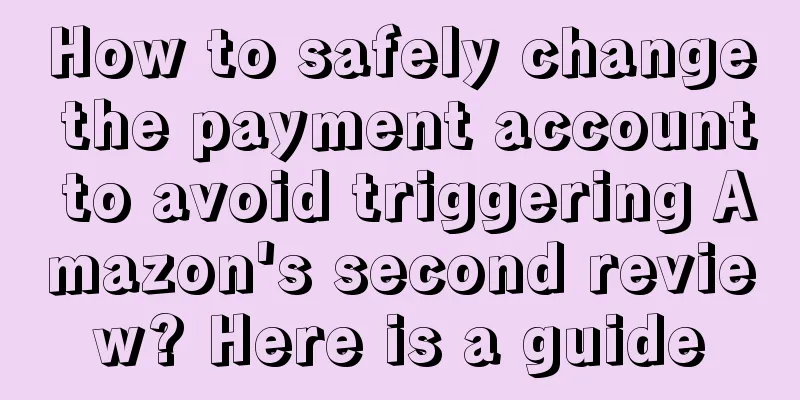New opportunities for cross-border e-commerce? Mexico: the next blue ocean for gold mining

|
LM123 learned that in recent years, Mexico, as an emerging Latin American blue ocean market, has been attracting much attention from the cross-border circle.
According to the Mexican Association of Online Sales (AMVO), Mexico's e-commerce GMV reached 401.3 billion pesos in 2021, a year-on-year increase of 27%, exceeding the world average (16.8%). At the same time, Statista predicts that by the end of 2022, Mexico is expected to have 64 million e-commerce users, and by 2025, this number is expected to reach 77.9 million.
▲ The picture comes from AMVO e-commerce report
It can be seen that Mexico has huge development potential, and its strong market expansion capabilities have also attracted many sellers to layout this emerging blue ocean market.
So what is the prospect of the Mexican market? Why has Mexico become one of the most promising markets for cross-border e-commerce?
1. E-commerce market has great potential
As the second largest e-commerce market in Latin America, Mexico has huge potential and a solid foundation for e-commerce development . LM123 learned that Mexico has a population of 130.9 million, of which 96.87 million are active Internet users, accounting for 68% of the total population, and the penetration rate of smartphones has reached 40.1%.
The extremely high Internet coverage rate has enabled Mexico's local e-commerce to develop rapidly. At the same time, its e-commerce market performance has also exceeded market expectations. Mexico's GDP in 2020 was approximately US$1.076 trillion. Compared with the decline of about 9% predicted by many institutions, Mexico's economy ultimately only shrank by 8.2% in 2020.
2. Consumption growth and the rise of social media
AMVO data report shows that the number of online consumers in Mexico has increased significantly. According to the survey, the purchasing population aged 25-64 has increased, and buyers with low and middle socioeconomic levels have become active again, which also means that online shopping in Mexico has become popular.
At the same time, LM123 learned that in Mexico, more and more consumers choose social commerce for shopping . Facebook and WhatsApp, as the main social platforms used by Mexican online shoppers , are deeply favored by local users. Among the 55% of purchases made through social commerce, more than 85% of consumers claim to have purchased products from Facebook, nearly 40% purchased products through WhatsApp, and 30% purchased through Instagram. Therefore, both platforms and independent sites have made social media a marketing focus.
The widespread popularity of social media has promoted the rapid development of Mexico's e-commerce market. According to the latest 2022 Mexican Social E-commerce Market Report released by Research And Market, Mexico's e-commerce market is expected to grow by 42% in 2022 and its value will exceed US$1.7 billion.
3. E-commerce platforms compete for layout 1. MercadoLibre Mexico is the fastest growing market for Mercado Libre platform transactions . In February 2022, Mercado Libre announced that it would invest US$1.475 billion in the Mexican market, 34% higher than its investment in the market in 2021 .
David Geisen, CEO of Mercado Libre Mexico, said the company is growing much faster in Mexico than in Latin America as a whole and is investing $420 million in Mexico in 2020 as part of its ongoing battle with Amazon to capture a larger share of the country's lucrative online retail market.
2. Amazon Affected by the ongoing pandemic, Amazon is also constantly expanding into new territories in an effort to recover its declining sales, and Mexico has become an important strategic target. According to Amazon platform data, Amazon has invested 19 billion pesos in Mexico, which has had a 3 billion pesos impact on Mexico's GDP.
LM123 learned that in 2021, Amazon also opened four new distribution centers in Mexico and provided next-day delivery services. This move undoubtedly provided convenience for sellers engaged in cross-border e-commerce trade in Mexico.
In Latin America, the Mexican market is particularly important for cross-border platforms and cross-border sellers. However, despite the promising cross-border market situation, the development of the Mexican e-commerce market also has certain limitations.
1. Electronic payment methods are restricted
Electronic payments in Mexico are currently dominated by local payment methods, with more than half of online payments made via credit and debit cards, followed by cash delivery, bank transfers and Paypal.
However, electronic payment in Mexico currently faces problems such as high default interest rates for overdue credit cards and handling fees for interbank cash withdrawals, which are restricting the development of local electronic payment.
At the same time, Mexicans generally like to pay in cash. Although there are alternative payment methods such as credit cards, savings cards, and online banking, 90% of consumer transactions are still conducted in cash, and 75% of consumption is paid in cash, which shows the degree of trust Mexicans have in cash.
2. Logistics delivery has defects
As Mexico continues to be favored by major institutions and companies in recent years, a large number of goods are exported to Mexico every year. As an important turning point in the Latin American market, Mexico has very strict regulations on import customs clearance, inspection, taxation, and certification , which discourages many sellers.
At the same time, the infrastructure of Mexico's logistics terminals, especially in remote areas, still has many defects, which also leads to low transportation efficiency and high prices.
For many sellers, Mexico is a relatively unfamiliar blue ocean market, but this e-commerce market cannot be underestimated. Its development potential and market tension all show that its future trend is very promising. Especially when the European, American and Southeast Asian markets are becoming saturated and competition is fierce, the Mexican market is another "territory" worth exploring. |
<<: One year after Andy Jassy took over as CEO, Amazon's direction has changed
Recommend
As internal circulation prevails, profits fall below the red line, and sellers call for an end to philanthropist behavior!
It is understood that according to foreign media r...
What are negative keywords? Negative keywords evaluation
Negative keywords are a great way for Amazon selle...
U.S. e-commerce sales to reach $1.2 trillion by 2024
According to the latest report released by FTI Con...
Wish and EverC join forces to crack down on counterfeit sales!
<span data-docs-delta="[[20,"获悉,据外媒报道,近日Wi...
The Russian market continues to heat up, is this an opportunity for Chinese sellers?
Russia's e-commerce market has been at a forma...
Amazon's "flash sale price" rules have been adjusted! Sellers should be careful of losing money!
Recently, Amazon is doing something again! The cal...
What is Carrefour? Carrefour Review
Retail is a form of retail that combines tradition...
What is 3Suisses? 3Suisses Review
3Suisses Faruier is a well-known French B2C e-comm...
What is Baotongda Logistics? Baotongda Logistics Review
Shenzhen Baotongda International Freight Forwardin...
The US housing market has cooled down significantly! The home furnishing category will continue to be sluggish!
<span data-docs-delta="[[20,"获悉,据外媒报道,由于楼市...
What is Seafolly? Seafolly Review
SEAFOLLY is an Australian swimwear brand founded b...
Collection! Amazon sellers must know the product image details! What kind of pictures can get high conversion rates?
Did you know that Amazon product images are the n...
What is baseusworld? Baseusworld Review
Founded by CU in 2011, baseusworld is a consumer e...
What is Joyingbox? Joyingbox Review
Joyingbox is committed to building a future-orient...
Best Buy starts the "Black Friday" sale on October 19! A new round of sales will start during Thanksgiving week!
<span data-shimo-docs="[[20,"Best Buy于10月1...









